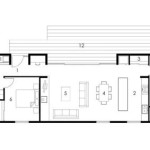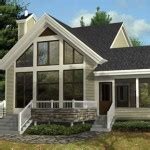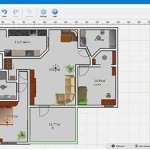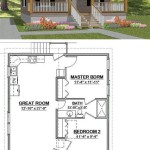Lowcountry house plans are architectural designs specifically tailored to the unique coastal climate and architectural traditions of the Lowcountry region of the southeastern United States. These plans incorporate features that enhance the region’s natural beauty and lifestyle, such as expansive porches, open floor plans, and elevated foundations.
One notable example of a Lowcountry house plan is the Charleston Single House, an iconic architectural style characterized by a tall, narrow footprint with a central hallway and side rooms. This design maximizes cross-ventilation and natural light, creating a comfortable living space in the warm and humid Lowcountry climate.
As we delve into this detailed article, we will explore the defining characteristics of Lowcountry house plans, discuss their history and evolution, and uncover the factors that make them enduringly popular in this enchanting coastal region.
When considering Lowcountry house plans, several key points stand out:
- Expansive porches
- Open floor plans
- Elevated foundations
- Cross-ventilation
- Natural light
- Historic charm
- Coastal resilience
- Energy efficiency
- Customizable designs
These elements combine to create homes that are both beautiful and functional, embracing the Lowcountry’s unique climate and lifestyle.
Expansive porches
Expansive porches are a defining feature of Lowcountry house plans. These porches extend the living space outdoors, providing a seamless transition between the interior and exterior of the home. They offer a shaded and comfortable space for relaxation, dining, and entertaining, while also serving as a buffer against the elements.
Traditionally, Lowcountry porches were designed to be wide and deep, with high ceilings and plenty of windows to maximize airflow and natural light. They were often wrapped around the entire house, providing panoramic views of the surrounding landscape. Today, porches continue to be an essential element of Lowcountry architecture, although their designs have evolved to reflect modern tastes and lifestyles.
Modern Lowcountry porches may feature amenities such as ceiling fans, outdoor kitchens, and comfortable seating areas. They are often screened in to keep out insects and provide protection from the sun and rain. Some porches are even designed with fireplaces or heaters, allowing homeowners to enjoy the outdoors year-round.
In addition to their practical benefits, expansive porches also add a touch of elegance and charm to Lowcountry homes. They create a welcoming and inviting space that encourages outdoor living and fosters a sense of community.
Open floor plans
Open floor plans are another defining characteristic of Lowcountry house plans. These plans feature large, open living areas that combine the kitchen, dining room, and living room into one cohesive space. This design creates a sense of spaciousness and flow, making the home feel larger and more inviting.
Open floor plans are particularly well-suited to the Lowcountry lifestyle, which emphasizes indoor-outdoor living and entertaining. The open design allows for easy access to the porch or patio, making it easy to transition between the two spaces. Additionally, open floor plans maximize natural light and airflow, creating a bright and airy living environment.
There are many different ways to design an open floor plan. Some popular options include:
- Great room: A great room is a large, open space that combines the living room, dining room, and kitchen into one area. This design is perfect for families who like to spend time together in one space.
- Island kitchen: An island kitchen is a kitchen that features a central island that serves as a food preparation area, eating space, and storage unit. This design is popular because it allows the cook to interact with guests while preparing meals.
- Open kitchen: An open kitchen is a kitchen that is not separated from the living room or dining room by walls or doors. This design creates a more social and inviting space.
Open floor plans offer a number of advantages, including:
- Increased natural light and airflow
- Improved sense of spaciousness
- Easier entertaining
- More family interaction
However, there are also some potential drawbacks to open floor plans, such as:
- Less privacy
- More noise
- Potential for clutter
Ultimately, the decision of whether or not to choose an open floor plan is a personal one. However, this design is a popular choice for many Lowcountry homeowners who value spaciousness, natural light, and indoor-outdoor living.
Elevated foundations
Elevated foundations are another key feature of Lowcountry house plans. These foundations raise the home above the ground, typically by 18 inches to 3 feet. This design has several advantages, including:
- Protection from flooding: The Lowcountry is prone to flooding, so elevated foundations help to protect homes from water damage. By raising the home above the ground, floodwaters are less likely to enter the house.
- Improved ventilation: Elevated foundations allow for better air circulation underneath the home. This helps to keep the house cool and dry, and can also help to prevent mold and mildew growth.
- Reduced moisture: Elevated foundations help to reduce moisture levels in the home. This is important in the humid Lowcountry climate, as high moisture levels can lead to problems such as mold and mildew growth.
- Pest control: Elevated foundations make it more difficult for pests to enter the home. This is especially important in the Lowcountry, which is home to a variety of insects and other pests.
There are several different types of elevated foundations that can be used for Lowcountry homes. These include:
- Crawlspace foundations: Crawlspace foundations are the most common type of elevated foundation used in the Lowcountry. These foundations feature a raised floor system that is supported by piers or columns. The crawlspace is typically enclosed with a vapor barrier to help keep the home dry.
- Pier foundations: Pier foundations are another popular option for elevated homes. These foundations feature piers that are driven into the ground and then support the home’s structure. Pier foundations are often used in areas with poor soil conditions or high water tables.
- Slab foundations: Slab foundations are not as common as crawlspace or pier foundations in the Lowcountry. These foundations feature a concrete slab that is poured directly on the ground. Slab foundations are less expensive than other types of elevated foundations, but they are not as effective at protecting the home from flooding.
The type of elevated foundation that is best for a particular home will depend on a number of factors, including the soil conditions, the flood risk, and the budget.
Cross-ventilation
Cross-ventilation is the movement of air through a space from one side to another. It is an important consideration in the design of Lowcountry homes, as it helps to keep the home cool and comfortable in the warm and humid climate.
- Improved air quality: Cross-ventilation helps to improve air quality by removing stale air and bringing in fresh air. This is important for both the health and comfort of the occupants.
- Reduced energy costs: Cross-ventilation can help to reduce energy costs by reducing the need for air conditioning. By allowing natural air to circulate through the home, the air conditioning system does not have to work as hard to keep the home cool.
- Increased comfort: Cross-ventilation can help to increase comfort by creating a more even temperature and humidity level throughout the home. This can help to reduce the risk of heat-related illnesses, such as heat stroke and heat exhaustion.
- Reduced moisture: Cross-ventilation can help to reduce moisture levels in the home. This is important in the humid Lowcountry climate, as high moisture levels can lead to problems such as mold and mildew growth.
There are several ways to design a home to promote cross-ventilation. These include:
- Windows and doors on opposite sides of the house: Placing windows and doors on opposite sides of the house allows air to flow through the home from one side to the other.
- Transom windows: Transom windows are windows that are placed above a door or window. They allow air to flow into the home even when the door or window is closed.
- Clerestory windows: Clerestory windows are windows that are placed high on a wall. They allow air to flow into the home from above, which can help to create a more even temperature and humidity level.
- Ceiling fans: Ceiling fans can help to circulate air throughout a room. This can help to improve cross-ventilation and make the room more comfortable.
By incorporating these design elements into their homes, Lowcountry homeowners can create a more comfortable and energy-efficient living environment.
Natural light
Natural light is an important consideration in the design of Lowcountry homes. The abundance of natural light in the Lowcountry creates a bright and airy living environment, which can improve both the mood and health of the occupants.
There are several ways to maximize natural light in a Lowcountry home. These include:
- Large windows and doors: Large windows and doors allow more natural light to enter the home. This can help to create a more spacious and inviting living environment.
- Transom windows: Transom windows are windows that are placed above a door or window. They allow natural light to enter the home even when the door or window is closed.
- Clerestory windows: Clerestory windows are windows that are placed high on a wall. They allow natural light to enter the home from above, which can help to create a more even and diffused light throughout the space.
- Skylights: Skylights are windows that are installed in the roof of a home. They allow natural light to enter the home from directly above, which can help to brighten up dark spaces.
In addition to these design elements, there are also several other things that Lowcountry homeowners can do to maximize natural light in their homes. These include:
- Use light colors: Light colors reflect more light than dark colors, so using light colors on the walls and ceilings of a home can help to make the space feel brighter and more airy.
- Keep windows and doors clean: Dirty windows and doors can block natural light from entering the home. Be sure to clean windows and doors regularly to allow as much natural light as possible to enter the home.
- Use mirrors: Mirrors can reflect natural light and help to brighten up a space. Place mirrors opposite windows or in areas that receive little natural light to help distribute light more evenly throughout the home.
By incorporating these design elements and tips into their homes, Lowcountry homeowners can create a bright and airy living environment that is both beautiful and healthy.
Historic charm
Lowcountry house plans are often imbued with historic charm, reflecting the region’s rich architectural heritage. This charm is evident in the use of traditional building materials, such as brick, wood, and tabby, as well as in the incorporation of classic architectural details, such as porches, columns, and shutters.
One of the most iconic examples of historic charm in Lowcountry house plans is the Charleston Single House. This type of house is characterized by its tall, narrow footprint, with a central hallway and side rooms. Charleston Single Houses typically feature a double piazza, or porch, that wraps around the front and side of the house. This porch provides a shady and comfortable space for relaxing and entertaining, and is a defining feature of Lowcountry architecture.
Another type of house that is often associated with historic charm in the Lowcountry is the raised cottage. Raised cottages are typically elevated on piers or columns, and feature a wraparound porch that provides panoramic views of the surrounding landscape. Raised cottages were originally designed to protect against flooding, but they have become popular for their charm and livability.
In addition to these traditional house types, many Lowcountry homes incorporate other elements of historic charm, such as:
- Brick or stone exteriors: Brick and stone are traditional building materials that give Lowcountry homes a sense of solidity and permanence.
- Wood siding: Wood siding is another popular choice for Lowcountry homes. It gives the home a warm and inviting appearance, and can be painted in a variety of colors to suit the homeowner’s taste.
- Tabby walls: Tabby is a type of concrete that was used extensively in the construction of Lowcountry homes in the 18th and 19th centuries. Tabby walls are thick and durable, and they give homes a unique and historic appearance.
- Columns and shutters: Columns and shutters are classic architectural details that add a touch of elegance to Lowcountry homes. Columns can be used to support porches or balconies, while shutters can be used to add privacy and shade to windows.
By incorporating these elements of historic charm into their homes, Lowcountry homeowners can create a beautiful and timeless living space that reflects the region’s rich architectural heritage.
Coastal resilience
Coastal resilience is the ability of a community to withstand and recover from the impacts of coastal hazards, such as hurricanes, floods, and storm surges. Lowcountry house plans are designed with coastal resilience in mind, incorporating features that help to protect the home from damage and make it more livable in the event of a disaster.
One of the most important aspects of coastal resilience is flood protection. Lowcountry homes are often elevated on piers or columns to raise them above the ground and reduce the risk of flooding. Additionally, many Lowcountry homes feature flood vents, which are openings in the foundation that allow floodwaters to enter and exit the home without causing damage. Flood vents can be closed during a flood to prevent water from entering the home.
Another important aspect of coastal resilience is wind resistance. Lowcountry homes are typically built with strong, durable materials, such as brick, concrete, and wood. Additionally, many Lowcountry homes feature hurricane shutters, which are designed to protect windows and doors from wind damage. Hurricane shutters can be closed during a hurricane to prevent wind and rain from entering the home.
In addition to flood and wind protection, Lowcountry house plans also incorporate other features that can help to make the home more livable in the event of a disaster. These features include:
- Backup generators: Backup generators can provide power to the home in the event of a power outage. This is important for keeping essential appliances, such as refrigerators and air conditioners, running during a disaster.
- Water storage: Water storage tanks can provide a supply of clean water in the event of a water outage. This is important for drinking, cooking, and bathing.
- Non-perishable food: Non-perishable food can provide a source of sustenance in the event of a food shortage. It is important to store non-perishable food in a cool, dry place.
- First-aid kit: A first-aid kit can provide essential medical supplies in the event of an injury.
By incorporating these features into their homes, Lowcountry homeowners can create a more resilient and livable space that is better prepared to withstand the impacts of coastal hazards.
Energy efficiency
Energy efficiency is an important consideration in the design of Lowcountry house plans. By incorporating energy-efficient features into their homes, Lowcountry homeowners can reduce their energy consumption and save money on their utility bills.
- Insulation: Insulation is one of the most important factors in determining the energy efficiency of a home. It helps to keep the home cool in the summer and warm in the winter by preventing heat from escaping. There are several different types of insulation that can be used in Lowcountry homes, including fiberglass, cellulose, and spray foam. It is important to choose an insulation that is appropriate for the climate and the type of home.
- Windows and doors: Windows and doors are another important source of heat loss in a home. Lowcountry homes should have energy-efficient windows and doors that are designed to minimize heat transfer. Energy-efficient windows and doors typically feature double or triple glazing, as well as low-emissivity (low-e) coatings. Low-e coatings help to reflect heat back into the home in the winter and keep it out in the summer.
- Appliances: The appliances in a home can also contribute to energy consumption. When choosing appliances, it is important to look for Energy Star-rated appliances. Energy Star-rated appliances are designed to be more energy-efficient than standard appliances.
- Lighting: Lighting can also contribute to energy consumption. Lowcountry homes should use energy-efficient lighting, such as LED bulbs. LED bulbs use less energy than traditional incandescent bulbs and last longer.
By incorporating these energy-efficient features into their homes, Lowcountry homeowners can create a more comfortable and energy-efficient living environment.
Customizable designs
Lowcountry house plans are highly customizable, allowing homeowners to create a home that is uniquely their own. There are several different ways to customize a Lowcountry house plan, including:
Floor plan: The floor plan is one of the most important aspects of a home design. Lowcountry house plans can be customized to include the number of bedrooms and bathrooms that you need, as well as the size and layout of the living spaces. You can also choose to add or remove features, such as a fireplace, a screened porch, or a home office.
Exterior: The exterior of your home is another way to express your personal style. Lowcountry house plans can be customized with a variety of exterior finishes, including brick, stone, siding, and stucco. You can also choose the color of your home, as well as the style of the windows and doors.
Interior: The interior of your home is where you will spend the majority of your time, so it is important to make it a reflection of your personality and lifestyle. Lowcountry house plans can be customized with a variety of interior finishes, including flooring, paint colors, and lighting. You can also choose to add or remove features, such as built-in bookshelves, a fireplace, or a wet bar.
Energy efficiency: Lowcountry house plans can also be customized to be more energy efficient. This can be done by adding features such as solar panels, geothermal heating and cooling systems, and energy-efficient appliances. By customizing your home to be more energy efficient, you can save money on your utility bills and reduce your environmental impact.










Related Posts








